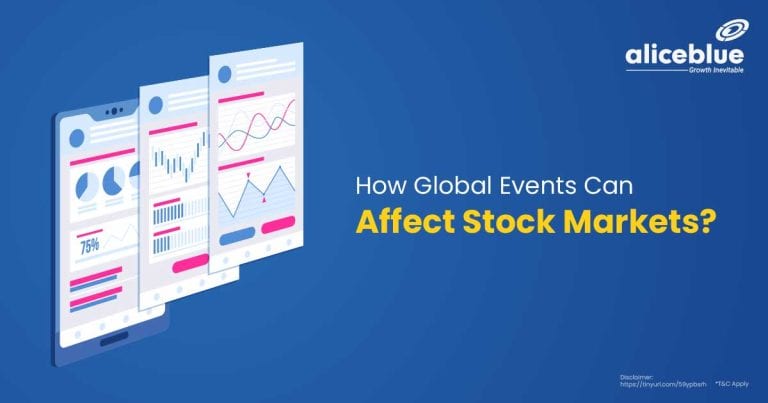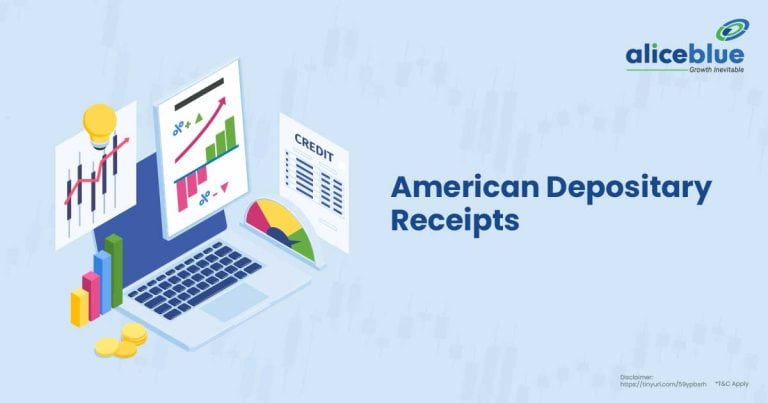The below table shows a list Of the Best Fixed-maturity Maturity Funds Based on AUM, NAV and Monthly SIP.
| Name | AUM (Cr) | NAV (Rs) |
| ICICI Pru FMP-85-10Y-I | 432.38 | 15.84 |
| Bandhan FTP-179-3652D | 323.33 | 15.87 |
| Nippon India FHF-XLI-8-3654D | 61.34 | 15.57 |
| SBI FMP-1-3668D | 45.63 | 15.55 |
| SBI FMP-6-3668D | 33.02 | 15.15 |

What Are Fixed Maturity Funds?
Fixed Maturity Funds (FMFs) are a type of debt mutual fund with a predetermined maturity date. They invest in fixed-income securities like bonds and are designed to provide predictable returns over a specified period, aligning with their maturity timeline.
FMFs offer a lower risk compared to equity funds because they invest in relatively safer fixed-income instruments. These funds aim to return the principal along with interest, making them suitable for conservative investors looking for stable income.
The primary benefit of FMFs is their ability to lock in returns and minimize interest rate risk by holding securities until maturity. They often offer higher returns than traditional savings accounts or fixed deposits.
Features Of Top Performing Fixed Maturity Funds in 5 Years
The main features of top-performing Fixed Maturity Funds over the past five years include consistent returns, low risk due to fixed-income securities, tax efficiency and the ability to lock in yields. These funds are ideal for conservative, long-term investors.
- Consistent Returns: Top-performing FMFs offer stable and predictable returns over a fixed period, often outperforming traditional savings instruments. They invest in high-quality debt instruments, reducing the likelihood of default, which ensures steady returns for investors.
- Low Risk: FMFs invest primarily in low-risk, fixed-income securities like government bonds and corporate debt. These investments are held until maturity, providing safety against market volatility and making them a reliable option for risk-averse investors.
- Tax Efficiency: FMFs benefit from indexation, which allows investors to adjust for inflation in long-term capital gains, significantly reducing their tax liability. This makes them more tax-efficient compared to fixed deposits or other short-term investment products.
- Locked-in Yields: Once FMFs invest in a portfolio of fixed-income securities, the yields are locked in for the fund’s duration. This offers investors protection against fluctuating interest rates, ensuring predictable and stable returns throughout the investment period.
Best Performing Fixed Maturity Funds in 5 Years
The table below shows the Best-performing Fixed Maturity Funds Based on the highest to lowest expense ratio.
| Name | Expense Ratio (%) |
| ICICI Pru FMP-85-10Y-I | 0.11 |
| Bandhan FTP-179-3652D | 0.05 |
| Nippon India FHF-XLI-8-3654D | 0 |
| SBI FMP-1-3668D | 0 |
| SBI FMP-6-3668D | 0 |
Top Performing Fixed Maturity Funds in 5 Years In India
The table below shows the Best Fixed Maturity Funds Based on the Highest 3Y CAGR.
| Name | CAGR 3Y (%) |
| Nippon India FHF-XLI-8-3654D | 6.3 |
| SBI FMP-1-3668D | 6.3 |
| ICICI Pru FMP-85-10Y-I | 6.25 |
| Bandhan FTP-179-3652D | 6.24 |
| SBI FMP-6-3668D | 6.12 |
Top Performing Fixed Maturity Funds in 5 Years List
The table below shows Best Performing Fixed Maturity Funds In India Based on Exit Load, i.e., the fee that the AMC charges investors when they exit or redeem their fund units.
| Name | AMC | Exit Load (%) |
| ICICI Pru FMP-85-10Y-I | ICICI Prudential Asset Management Company Limited | 0 |
| Bandhan FTP-179-3652D | Bandhan AMC Limited | 0 |
| Nippon India FHF-XLI-8-3654D | Nippon Life India Asset Management Limited | 0 |
| SBI FMP-1-3668D | SBI Funds Management Limited | 0 |
| SBI FMP-6-3668D | SBI Funds Management Limited | 0 |
Factors To Consider When Investing In Top Performing Fixed Maturity Funds in 5 Years
The main factors to consider when investing in top-performing fixed maturity funds over the last five years include their risk profile, interest rate trends, fund duration and tax implications, as these can significantly impact the returns and suitability of your portfolio.
- Risk Profile: Assess the credit risk and market risk associated with the fund. Fixed maturity funds carry lower risk, but investors should evaluate the quality of underlying securities to ensure their risk appetite aligns with the investment.
- Interest Rate Trends: Interest rate movements directly influence bond yields in fixed-maturity funds. Higher interest rates can reduce bond prices, impacting returns. Understanding past and projected rate changes helps in timing your investment appropriately.
- Fund Duration: The duration of the fund determines its sensitivity to interest rate changes. Longer-duration funds are more affected by rate fluctuations. Opt for funds that match your investment horizon and risk tolerance for stability.
- Tax Implications: Fixed maturity funds may attract capital gains tax, depending on the investment tenure. Long-term investments (over three years) can benefit from indexation, reducing tax liability. Investors should be aware of the tax rules to maximize post-tax returns.
How To Invest In Top Performing Fixed Maturity Funds in 5 Years?
To invest in top-performing fixed maturity funds over the last five years, start by researching and comparing funds based on their performance, credit quality and interest rate sensitivity. Check their historical returns and align them with your financial goals and risk tolerance.
Next, choose a reliable platform like Alice Blue, which offers a seamless investment experience. Sign up for an account, complete the KYC process and use their brokerage services to explore and invest in various fixed maturity funds easily.
Once registered, you can monitor your portfolio regularly using Alice Blue’s tools, ensuring your fixed maturity funds align with your investment strategy. Rebalance as necessary, keeping in mind interest rate movements and overall market conditions to optimize returns.
Advantages Of Investing In Top Performing Fixed Maturity Funds in 5 Years
The main advantage of investing in top-performing Fixed Maturity Funds (FMFs) over 5 years is the potential for stable returns due to predetermined maturities, reduced risk from market volatility and tax benefits through indexation for long-term capital gains.
- Stable Returns: FMFs lock in returns based on the prevailing interest rates during their launch, providing more predictable returns compared to open-ended debt funds, which may be subject to fluctuations due to changing interest rates.
- Reduced Market Volatility Risk: Since FMFs are closed-ended, they invest in fixed-income securities that mature within the fund’s tenure, offering protection from short-term market fluctuations and interest rate risks.
- Tax Efficiency: Investments in FMFs held for more than three years qualify for long-term capital gains (LTCG), benefiting from indexation, which lowers the tax burden by adjusting the purchase price for inflation.
- Diversified Portfolio: FMFs typically invest in a range of fixed-income instruments like government securities, corporate bonds and money market instruments, providing diversification and reducing the impact of any single asset’s performance on overall returns.
Risks Of Investing In Top Performing Fixed Maturity Funds in 5 Years
The main risk of investing in top-performing Fixed Maturity Funds (FMFs) over 5 years is limited liquidity, as these funds are closed-ended. Additionally, FMFs may face credit risks and interest rate fluctuations affecting their returns despite their fixed-income nature.
- Limited Liquidity: Since FMFs are closed-ended, investors cannot redeem their units until maturity, making it difficult to access funds during emergencies or take advantage of better market opportunities.
- Credit Risk: FMFs may invest in lower-rated corporate bonds to generate higher returns, but these bonds carry a risk of default if the issuing company faces financial difficulties, impacting the fund’s overall returns.
- Interest Rate Risk: While FMFs aim for stable returns, rising interest rates during the investment tenure can reduce the value of underlying fixed-income securities, potentially leading to lower-than-expected returns at maturity.
- Inflation Risk: Fixed Maturity Funds may not always outperform inflation, especially in high inflation environments, which can erode the real value of returns over the investment horizon, reducing the purchasing power of the invested capital.
Importance of Fixed Maturity Funds
Fixed Maturity Funds (FMFs) are important for investors seeking predictable returns with lower risk. They invest in fixed-income securities that mature alongside the fund’s tenure, providing stable returns unaffected by daily market volatility, making them suitable for conservative investors.
FMFs also offer tax efficiency through indexation benefits on long-term capital gains, especially for those holding investments for over three years. Their diversified portfolios of bonds, government securities and corporate debt instruments further reduce risk while providing steady income over a fixed term.
How Long to Stay Invested in Fixed Maturity Funds?
Investors should ideally stay invested in Fixed Maturity Funds (FMFs) until the fund’s maturity date. Exiting early can lead to reduced returns or potential losses, as FMFs are designed to deliver optimal results over the entire investment tenure.
Holding FMFs until maturity allows investors to fully benefit from the predetermined interest rates and tax efficiency, particularly long-term capital gains with indexation benefits. Early redemption may also limit liquidity, as FMFs are closed-ended, restricting the ability to exit without affecting returns.
Tax Implications of Investing in Fixed Maturity Funds
Investing in Fixed Maturity Funds (FMFs) held for over three years qualifies for long-term capital gains (LTCG) tax. The LTCG tax rate is 20% with indexation benefits, which adjusts the purchase price for inflation, reducing the taxable amount significantly.
For investments held under three years, gains are taxed as short-term capital gains (STCG) and are added to the investor’s income, taxed according to their applicable income tax slab. This makes holding FMFs for the long term more tax-efficient due to the benefits of indexation.
Future of Fixed Maturity Funds
The future of Fixed Maturity Funds (FMFs) looks promising, especially for conservative investors seeking predictable returns amidst market volatility. As interest rates fluctuate, FMFs will remain attractive for those desiring stability and tax efficiency over a fixed investment period.
With growing awareness of tax benefits through indexation and the security of fixed-income instruments, FMFs are likely to see increased demand. Their ability to offer diversified, lower-risk investments makes them a strong contender in the evolving debt fund landscape.

Top Performing Fixed Maturity Funds in 5 Years – FAQs
Fixed Maturity Funds (FMFs) are closed-ended debt mutual funds that invest in fixed-income securities like bonds and government securities, with a specific maturity date. They provide stable returns by holding these assets until maturity, minimizing exposure to interest rate fluctuations.
Top Fixed Maturity Funds #1: ICICI Pru FMP-85-10Y-I
Top Fixed Maturity Funds #2: Bandhan FTP-179-3652D
Top Fixed Maturity Funds #3: Nippon India FHF-XLI-8-3654D
Top Fixed Maturity Funds #4: SBI FMP-1-3668D
Top Fixed Maturity Funds #5: SBI FMP-6-3668D
These funds are listed based on the Highest AUM.
The Best Fixed Maturity Funds based on expense ratio include ICICI Pru FMP-85-10Y-I, Bandhan FTP-179-3652D, Nippon India FHF-XLI-8-3654D, SBI FMP-1-3668D, SBI FMP-6-3668D.
The Best Fixed Maturity Funds based on 3Y CAGR include Nippon India FHF-XLI-8-3654D, SBI FMP-1-3668D, ICICI Pru FMP-85-10Y-I, Bandhan FTP-179-3652D, SBI FMP-6-3668D.
Investing in top-performing fixed maturity funds over five years can be beneficial, offering predictable returns and lower risk compared to equities. They suit conservative investors seeking capital preservation but ensure to evaluation the fund’s past performance and current market conditions.
Yes, you can buy top-performing fixed-maturity funds in five years through Alice Blue. These funds typically have a defined maturity date and invest in fixed-income securities, making them a stable choice for capital preservation and predictable returns over the investment period.
We hope you’re clear on the topic, but there’s more to explore in stocks, commodities, mutual funds, and related areas. Here are important topics to learn about.
Disclaimer: The above article is written for educational purposes and the companies’ data mentioned in the article may change with respect to time. The securities quoted are exemplary and are not recommendatory.









